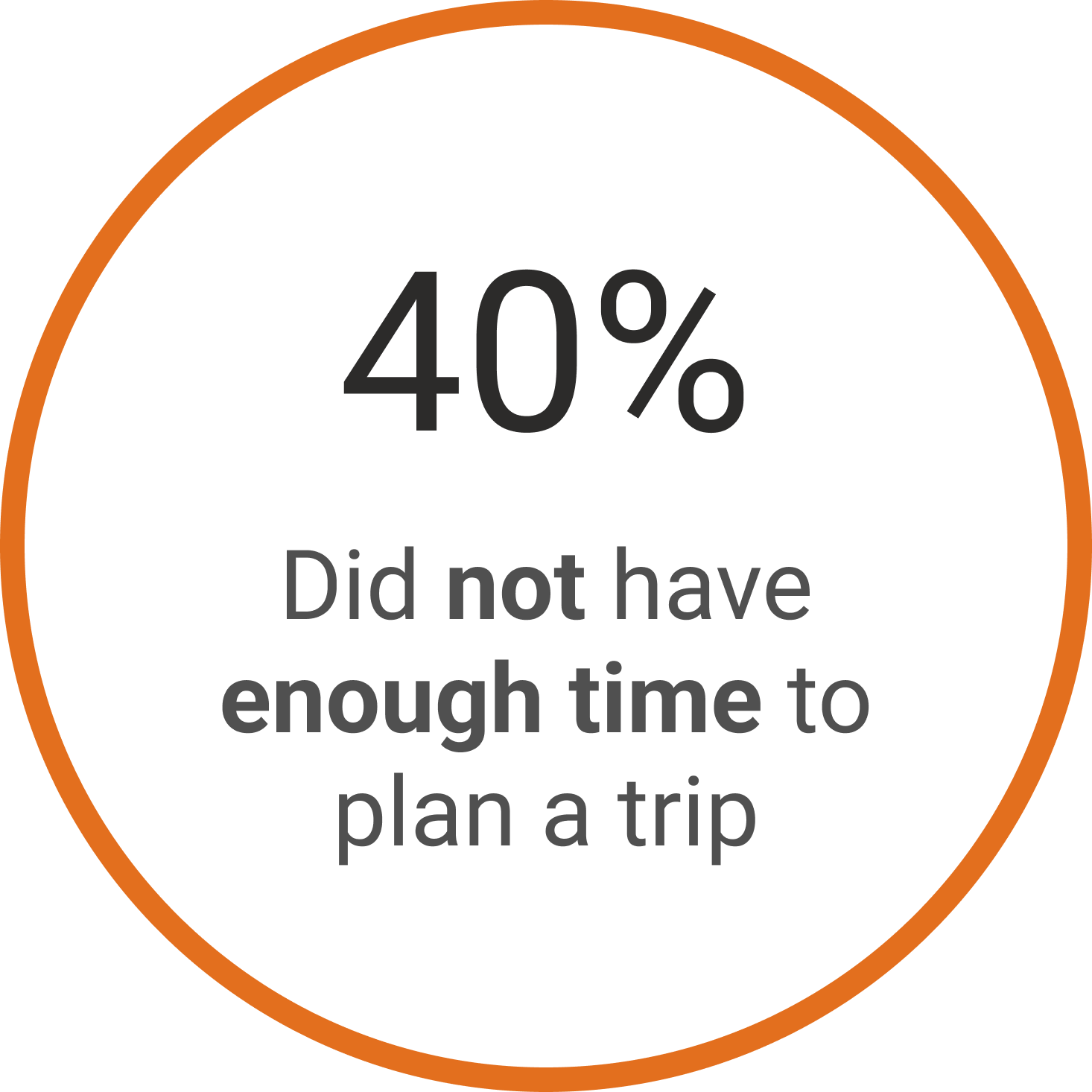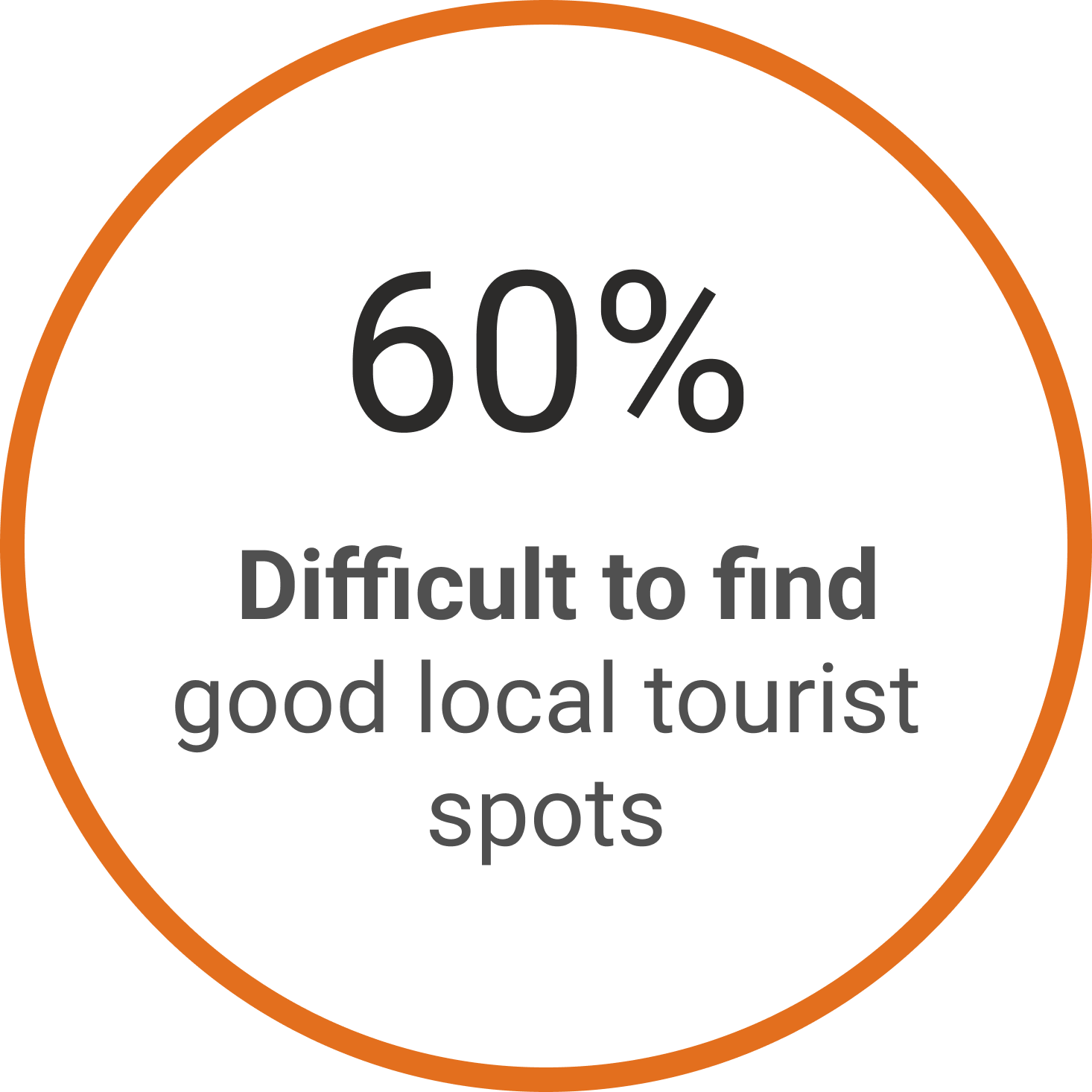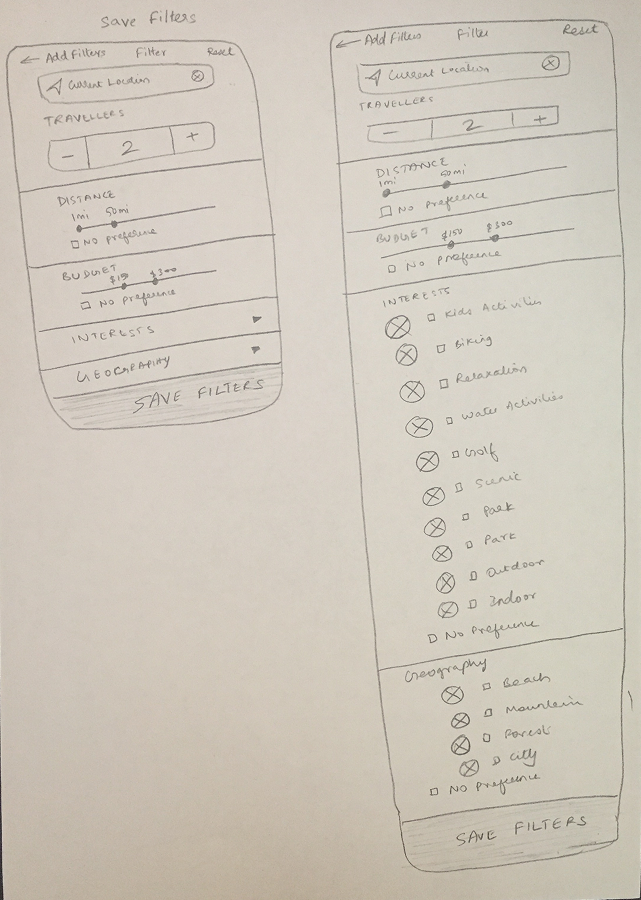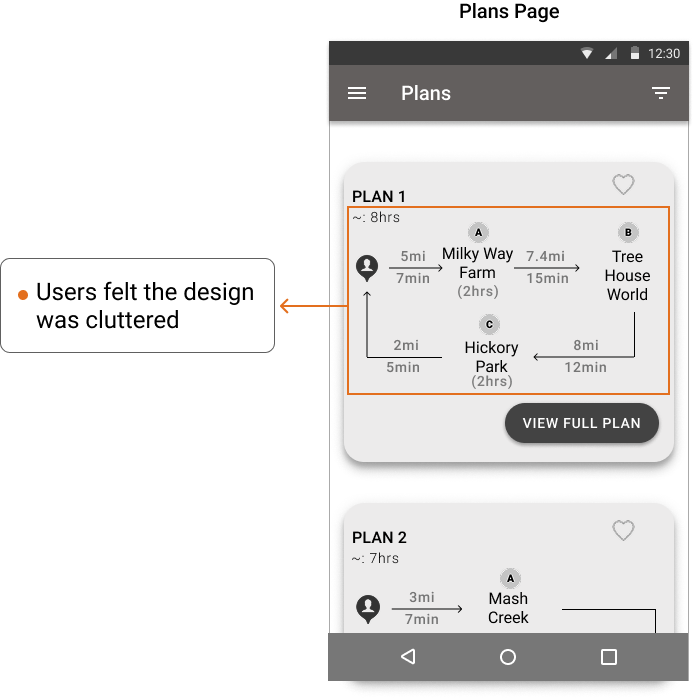Day trip planning app that dynamically generates personalized trip itineraries based on user preferences, streamlining the planning process to save time and effort.
Project: Freelance work for individual client | Service: App Design | Timeline: 2 months | My Role: Research, UX & UI | Team: Sole Designer
Overview
This case study details the design process for Ride, a mobile application conceived by a client who approached me with a promising startup idea. The impetus for Ride stemmed from the client's own challenges and observations of widespread inefficiencies and frustrations associated with planning day trips. Recognizing a significant opportunity to streamline this process and enhance user experience for individuals ranging from solo adventurers to families and groups seeking local escapes or tourist explorations, he sought my expertise to initiate the design for Ride. The primary goal of this initial design phase included understanding user needs and preferences in day trip planning, defining core app features that address these needs, and establishing a user-friendly and intuitive interface that simplifies the entire planning journey.
User Survey Results
Tool: Google Forms | No. of participants: 26
User Perspectives: Notable Interview Excerpts
Problem Statement
How might we design a streamlined, intuitive solution that helps users efficiently plan day trips within their time, budget, and preferences?
Meet Sam - Our Target User
Analyzing our competitors
Competitors: Google Maps, Expedia, TripAdvisor
Takeaways:
Competitors offer vast amounts of trip data, but often lack focus on day-trip specifics.
Platforms like TripAdvisor and Google Maps offer general recommendations, missing the opportunity for tailored, user-specific day trip planning.
Too many options and features can overwhelm users, making it difficult to focus on planning a simple day trip
TripAdvisor excels at integrating user reviews, which helps build trust and provides social proof for destinations.
Platforms such as Expedia and TripAdvisor have cluttered interfaces, which detracts from the simplicity needed for quick day trip planning.
Google Maps excels in navigation but lacks a dedicated system to connect day trip planning directly to real-time navigation.
Conceptualization
To kick off the design phase, I started by sketching out several initial concepts for the filter page. My primary focus was on incorporating the key filtering elements that users highlighted as important in the survey and interviews: distance, price, and interests. I explored various layouts, prioritizing an intuitive and user-friendly experience. This involved considering the natural flow of information, ensuring clear visual hierarchy, and making sure the filtering options were easily accessible and understandable at a glance. The goal was to create a seamless way for users to narrow down their choices based on their most relevant preferences.
Next, I sketched concepts for presenting day-trip plan ideas. My core design principle here was to offer users optimized options that intelligently considered travel time, distance, and their individual preferences. I envisioned the app automatically generating comprehensive itineraries based on user input. When sketching the homepage, my priority was to clearly communicate the breadth of day-trip possibilities the app could generate and provide an immediate visual understanding of each plan's structure. To achieve this, I explored a design that utilized arrow marks to visually map out the entire day trip, from start to finish. This visual representation aimed to allow users to quickly grasp the flow and content of each plan at a glance.
To quickly validate these initial design directions, I rapidly prototyped wireframes in Figma. This interactive prototype was then shared with five participants, and I conducted moderated user testing sessions via Zoom to gather their feedback.
Initial User Testing Results
When viewing the design on mobile screens, numerous elements like arrow marks and text competed for limited space, leading to a visually dense and overwhelming experience. This lack of negative space and the compression of visual cues made it challenging for users to focus on key information and navigate the content effectively, resulting in a feeling of clutter and overcrowding.
Even though the design used cards to organize information, having several cards one after the other resulted in excessive scrolling. If people expected to find information quickly, all this scrolling would make the experience slow and frustrating.
Wireframe Iterations
Bringing the Design to Life
Finally I created the high-fidelity version of the design after incorporating the feedback from the usability testing. The result was an app which functions as a personal trip planner that dynamically generating personalized itineraries according to individual user preferences. By doing so, it streamlines the entire planning process, saving users both time and effort. Ride transforms what was once an overwhelming task into an exciting journey of discovery, empowering people to effortlessly organize and plan outings that cater to everyone's needs.
Testing the hi-fi prototype
Final Iterations
Project Learnings
This project successfully translated user needs into a functional and visually appealing app that simplifies day trip planning. As a freelance project, I encountered challenges, including managing the entire design lifecycle independently and effectively communicating design decisions to a client unfamiliar with UX principles, but these challenges enriched my understanding of the UX design process. I honed my ability to conduct thorough user research, synthesize findings, and iterate designs based on feedback, while also reinforcing the critical role of client communication and relationship management. In conclusion, this project not only resulted in a practical solution for day trip planning but also provided invaluable experience in navigating the complexities of a freelance UX design project, and the lessons learned in project management, client communication, and independent problem-solving will undoubtedly inform and enhance my future design endeavors.
























